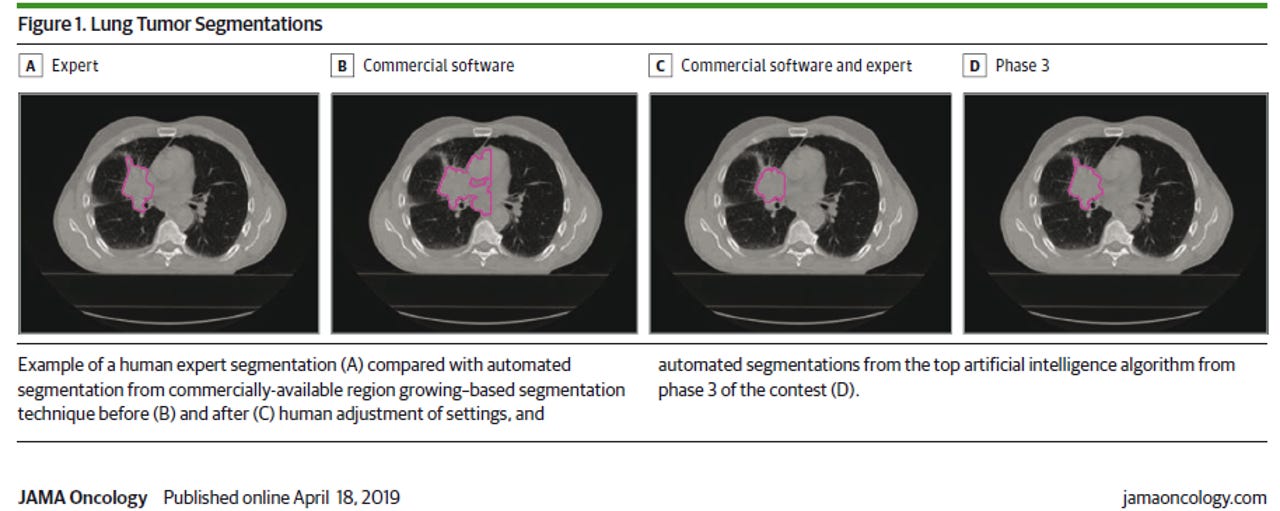Researchers find crowdsourcing, AI go together in battle vs. lung cancer


Researchers from Harvard, Brigham/Women's and Dana Farber Cancer Institute indicate that the combination of crowdsourcing and artificial intelligence can be used to battle lung cancer.
In a JAMA article, researchers from those institutions outlined how they conducted a contest on Topcoder.com to host an algorithm challenge. The contest was designed for three phases with $55,000 in a prize pool.
The contest on Topcoder revolved around creating algorithms and artificial intelligence that could identify lung tumors and segment them for radiation therapy. The approach is notable given that the existing radiation oncologist workforce can't meet global demand. Lung cancer caused an estimated 150,000 deaths in the US in 2018.
By holding a contest with a well curated data set -- CT scans from 461 patients and 77,942 images with 8,144 of them having a tumor present -- researchers were able to get contestants a training set, see algorithms develop and then create a feedback loop from clinicians.
Here's the backdrop of what the algorithms had to do and the global implications:
Unlike cancer image analysis for diagnostic purposes, which produces a single binary answer (yes or no) to a single question ("Is a mass present?"), therapeutic tumor segmentation involves interpretation of medical imaging on a voxel-by-voxel basis to classify cancer vs. normal organ and incorporates an intrinsic risk-benefit assessment of where the radiation dose is to be delivered. For an expert radiation oncologist, this requires both training and intuition, and experience may directly impact lung cancer outcomes.
However, this critical human resource is not accessible to many underserved patients in both the United States and globally. Although approximately 58% of lung cancer cases occur in less developed countries, these countries have a staggering shortage of radiation oncologists, with an estimated 23,952 radiation oncologists required in 84 low- and middle-income countries by 2020 yet only 11,803 were available in 2012.
Algorithms were scored on an independent data set and then ranked on segmentations from the algorithm versus human experts.
Primers: What is AI? | What is machine learning? | What is deep learning? | What is artificial general intelligence?
Add it up and researchers had 564 contestant from 62 countries registered for the challenge, which was spread over 10 weeks. The top five AI algorithms were able to segment tumors on par with experts. By the final phase, the top algorithm improved. Researchers also combined the top 5 algorithms in phase two and phase three to improve performance.
Researchers ultimately concluded that crowdsourcing and AI may be able to yield results quickly. According to the paper:
Combined crowd innovation and AI approach rapidly produced automated algorithms that replicated the skills of a highly trained physician for a critical task in radiation therapy. These AI algorithms could improve cancer care globally by transferring the skills of expert clinicians to under-resourced health care settings.
TechRepublic: Cheat sheet: TensorFlow, an open source software library for machine learning | SEE: Artificial intelligence: Trends, obstacles, and potential wins (Tech Pro Research) | Artificial intelligence: A business leader's guide (TechRepublic download)